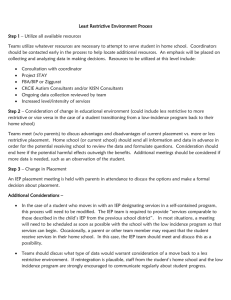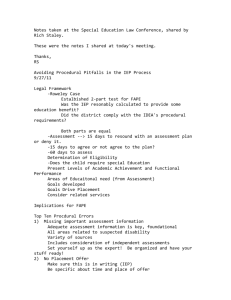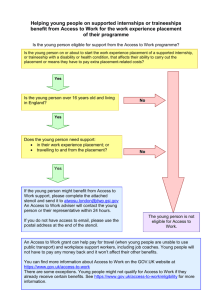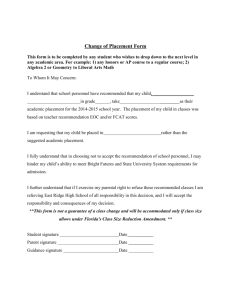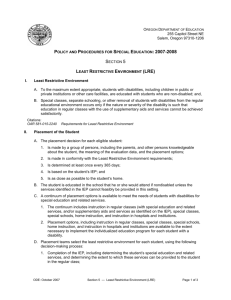The Decision Placement
advertisement
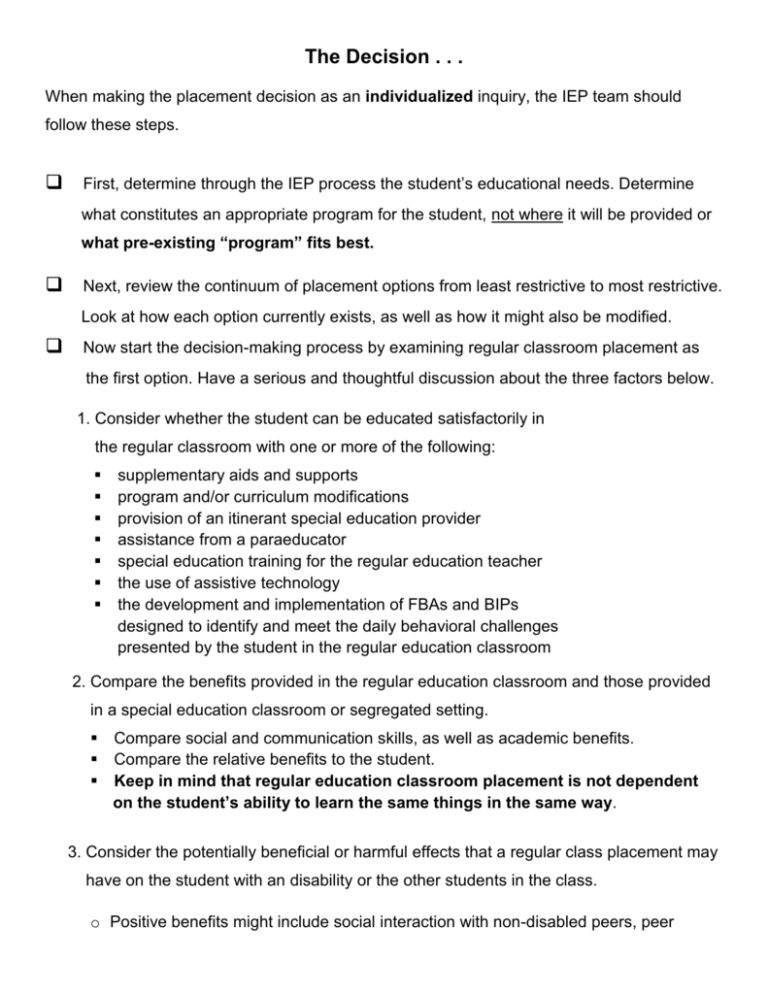
The Decision . . . When making the placement decision as an individualized inquiry, the IEP team should follow these steps. First, determine through the IEP process the student’s educational needs. Determine what constitutes an appropriate program for the student, not where it will be provided or what pre-existing “program” fits best. Next, review the continuum of placement options from least restrictive to most restrictive. Look at how each option currently exists, as well as how it might also be modified. Now start the decision-making process by examining regular classroom placement as the first option. Have a serious and thoughtful discussion about the three factors below. 1. Consider whether the student can be educated satisfactorily in the regular classroom with one or more of the following: supplementary aids and supports program and/or curriculum modifications provision of an itinerant special education provider assistance from a paraeducator special education training for the regular education teacher the use of assistive technology the development and implementation of FBAs and BIPs designed to identify and meet the daily behavioral challenges presented by the student in the regular education classroom 2. Compare the benefits provided in the regular education classroom and those provided in a special education classroom or segregated setting. Compare social and communication skills, as well as academic benefits. Compare the relative benefits to the student. Keep in mind that regular education classroom placement is not dependent on the student’s ability to learn the same things in the same way. 3. Consider the potentially beneficial or harmful effects that a regular class placement may have on the student with an disability or the other students in the class. o Positive benefits might include social interaction with non-disabled peers, peer modeling, high expectations, and acceptance of others. o Harmful effects might include unduly disruptive behavior that impairs the student’s learning or that of others even with the implementation of a BIP. Consider each of the three factors above equally. Keep in mind the placement decision cannot be solely based on Category of the disability Severity of the disability Language and communication needs Keep in mind the placement decision cannot be solely based on Needed modifications in the curriculum Configuration of the public agency’s delivery system Availability of space or educational and related services Administrative convenience Keep in mind that where there is a reasonable likelihood that a student with disabilities can be educated in the regular classroom with supplementary aids and supports, then that placement should be tried for as much as the school day as possible. If the team agrees that the student should receive part or all of the special education services outside of the regular classroom, then the IEP must also provide opportunities for participation in regular education programs in academic, nonacademic, or extracurricular activities, as appropriate. If the team agrees that the student’s IEP cannot be satisfactorily implemented in the regular education classroom with the provision of supplementary services and supports, then the team can consider a more restrictive placement keeping in mind that the regular education classroom is not the LRE for that student at that time. That is, having the understanding that the ultimate plan and goal is to work towards a more fully inclusive placement when possible. Finally, clearly articulate on the IEP document the placement decision and the justification for the decision.
